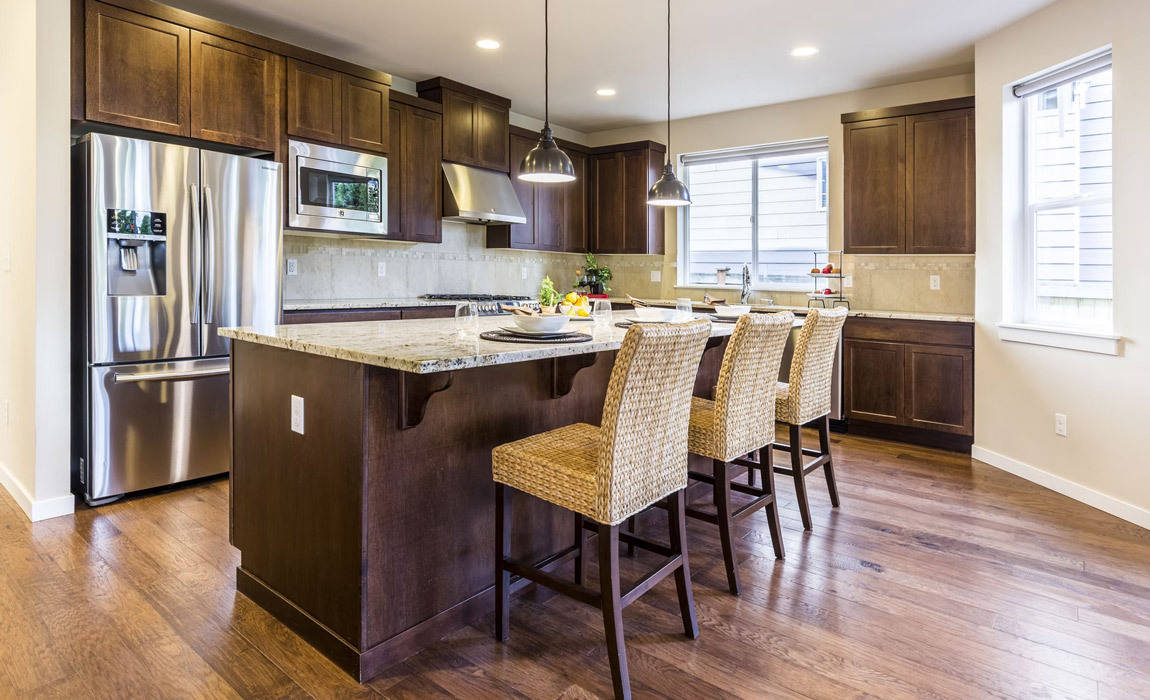Not too long ago, everyone wanted bar height counters in their kitchens. They were the height of interior design fashion! But they're becoming less and less popular, particularly as open-plan designs continue to gain popularity.
What Are Bar Height Counters?
Bar height counters are simply countertops that are around 42 inches high. They can be used as one-level counters (which is rare and often only used for purpose-made home bars in gardens and spare rooms) or as two-tiered counters, also known as raised bars. These raised bars were huge in the early 2000s, however, they've begun to disappear, with many people opting instead for one-level countertops and flat kitchen islands or breakfast bars.
What Other Types Of Countertop Are There?
Counter height-wise, there are a few options. You can go custom and get an interior designer to design ideas for your counters and do your kitchen planning if you want to, including your kitchen accessories. Or you could choose to have dining height counters, which are roughly 29 inches tall, making them inconvenient for food prep but well suited for a counter in a family room.
The most common option is standard counter height countertops, which is what many people use for their kitchen island or breakfast bar. Standing at around 37 inches, this is the height of most countertops in most homes. These are usually all the same height across the kitchen, providing much more bench space, leg room and counter space than bar height counters.
What Are The Benefits Of Bar Height Counters?
Bar height countertops have a few benefits, and these benefits are exactly what made them so popular in kitchens for many years. First and foremost, they are a great way to create a real definition of space in a kitchen. If your home has a kitchen diner, using a two-tier island creates a kind of wall or barrier between the dining room and the kitchen, without actually cutting into the space you have.
Likewise, a two-tier island is a simple way to introduce an eating area or seating area in a kitchen or dining room without having to take up a large amount of space with a dining table. Instead, it creates a small kitchen island or breakfast bar type of space that a family can sit at with bar stools to enjoy time together.
By installing a two-tiered breakfast bar or countertop, homeowners were also able to provide their kitchens with a sense of privacy that flat, one-level counters do not provide. With a counter height of 42 inches, a raised bar prevents people from seeing into the space behind it, preventing guests from spotting any mess or clutter in the kitchen. Often, bar height counters were installed with the kitchen sink area close to allow homeowners to hide clutter, like any dish soap, sponges or dirty dishes that might be sitting there. This privacy also kept people from watching as someone cooked, as they could use the counter behind the bar-height counter to do food prep and as cooking space.
A bar height countertop is also a useful kitchen element for anyone who socializes regularly, as they provide a good space for casual dining or a lovely little bar area.
What Are The Downsides To Bar Height Countertops?
There are, of course, downsides to bar height counters. These are large contributing factors to the decline of bar height counters in the world of kitchen trends. The biggest downside of bar height counters is that the raised bar section of the countertop takes away space from the prep space and cooking space. Suddenly the countertop is much smaller, and there is just a small shelf-like bar table to make up for it. This can make cooking large meals more difficult and can make the food prep space feel claustrophobic and tight.
Due to the size of most raised bars, the bench created by the two-tiered countertop is also quite small, unless someone has a very large island or a lot of extra space. This can make it an uncomfortable dining area with very limited bench space.
Having a two-tiered counter can also distract from the beauty of a brilliant counter material like gorgeous granite or marble. Where the countertop is split into two parts, it is not able to access as much light, making the material duller than it would otherwise be.
Are bar height counters out of style?
In short, yes. Bar height counters have had their time in the limelight, and now are generally being pushed aside in favour of level kitchen islands and breakfast bars. These are much more in line with the ever-rising open plan kitchen trend and provide many more benefits than bar height counters do. Whilst having a bar counter with proper bar stools may appeal to many, in practice the bar height counters prove themselves to be inconvenient.
Where larger kitchen islands are able to hold stainless steel appliances and provide an extension to the living space of a home, bar height counters and bar height seating in a kitchen tend to just break up the flow of a room and are not as useful for eating and drinking as they might seem.
However, if you have your heart set on a bar-height counter, don't let what is in vogue and what isn't affect your decision. At the end of the day, it is all down to personal preference, and if you think that a bar-height counter with some nice bar stools will serve you and your kitchen well, there is no reason not to give it a go. Just consider the downsides of the counter height you're choosing before you start to hire professionals to set up your raised bar.
